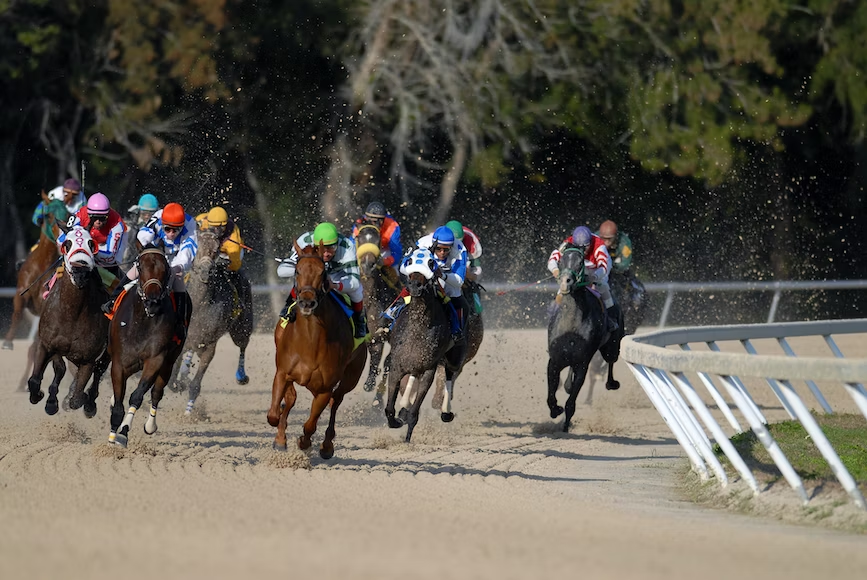The Early Predictions Of The 2023 Travers Stakes
 The 2023 Travers Stakes is another horse racing event that fans, experts, and bettors look forward to. This race takes place every August of the year. As we enter the month, Travers Stakes fans are at the edge of their seats as they wait for updates, news, and predictions about the upcoming race.
The 2023 Travers Stakes is another horse racing event that fans, experts, and bettors look forward to. This race takes place every August of the year. As we enter the month, Travers Stakes fans are at the edge of their seats as they wait for updates, news, and predictions about the upcoming race.
Therefore, let’s not delay this any further. Below, we have compiled the early predictions for the 2023 Travers Stakes that you might want to check out.
Probable Contenders
The first prediction making rounds on the internet weeks before the 2023 travers stakes is the probable contenders running on Saratoga. Knowing the possible contenders will give you a heads-up of who will likely win the race this year.
So, without further ado, here is a list of the contenders that could run for the Travers Stakes this year.
Angel of Empire
Angel of Empire is the first name you’ll hear as a contender when discussing the upcoming Travers Stakes. Brad Cox trains Angel of Empire and will be ridden by Jockey Flavien Prat. The thoroughbred won the 2023 Risen Star (G2) and the 2023 Arkansas Derby (G1).
Arcangelo
Arcangelo is the next thoroughbred expected to run in the Travers Stakes. This 3-year-old colt is trained by Jena Antonucci and ridden by Jockey Javier Castellano. Arcangelo has a pretty strong race record, with his last two being the 2023 Peter Pan (G3) and the 2023 Belmont Stakes (G1), where he finished first.
Blazing Sevens
Blazing Sevens is another name in horse racing that might ring a bell. It’s because this thoroughbred had participated in multiple races this year, where the 2023 Preakness Stakes was his best race so far, where he finished in 2nd place.
Disarm
Steve Asmussen is also showing interest in the Travers Stakes with his horse Disarm after he finished fourth on the Jim Dandy (G2) race last July 29th. If the team will push through with the Travers Stakes, Disarm will likely be ridden by Jockey Joel Rosario.
Forte
Forte started his career on top and consistently performed amazingly, cementing his reputation as the division leader. He was the favorite of the Kentucky Derby but was scratched due to a bruised foot.
However, after that unfortunate morning, Forte dominated all races he entered except for one, which was the Belmont Stakes (G1), where he finished second.
Mage
Mage dominated the 2023 Kentucky Derby, proving that anyone in the race can win. He was considered a long-shot contender with a 15-1 odds of winning the Kentucky Derby. After winning the Derby, he tried his luck in the Preakness Stakes and finished third.
Team Mage then participated in the Haskell Stakes (G1), where the thoroughbred finished second.
National Treasure
Another contender that is predicted to participate in the Travers Stakes is National Treasure. National Treasure is trained by Bob Baffert, one of the best trainers of his time, and is ridden by John Velazquez, a renowned jockey.
Reincarnate
Last on the list of probable contenders for the upcoming Travers Stakes is Reincarnate. He is another Bob Baffert horse who recently won the 2023 Los Alamitos Derby (LS). Reincarnate also won the Sham Stakes (G3) this year and came 3rd on both Arkansas (G1) and Rebel stakes. But unfortunately, Reincarnate finished the Kentucky Derby in the 13th place.
Who is Predicted to Win the 2023 Travers Stakes
Looking at the list of probable contenders for the Travers Stakes, it’s evident that many strong horses with huge chances of winning plan to enter the race. Looking at these contender’s racing records, you’ll be baffled about who will win.
That’s why horse racing experts are there and share their inputs to help the fans and bettors pinpoint the horse with the biggest chance of winning. But as of writing, experts haven’t predicted who will win the race yet.
Given the probable contenders mentioned above, and with their race record and past performances, it’s safe to say that Forte is the one that will likely dominate the Travers Stakes this year. He is the leader in his division and is the strongest thoroughbred in his time.
He was the favorite entering the Kentucky Derby, the Belmont Stakes, and the other races he participated in. Forte has a flawless record that proved his strength and skills in winning every race he entered. If Forte’s team decided to push through with the Travers Stake, you better watch out for him.
Bottomline
We are still weeks away from the 2023 Travers Stakes, and the final data about the race isn’t available yet. But due to the number of fans and bettors anxious about knowing the contenders and the possible outcome of the upcoming race, predictions are being released weekly as the event is nearing.
Keep in mind that the information provided above isn’t fixed yet. There are still many changes that will happen in the upcoming days. You better watch out for more updates in the future.
 Anyone looking for horse racing in the vicinity of the capital city may be pleased to learn that there are, in fact, five or six racecourses, offering Flat and National Hunt action, within 30 miles of central London. Kempton Park, which is situated in Sunbury-on-Thames, Surrey, on the outskirts of Greater London, is the closest of them all, at a distance of just over 15 miles via the A4 and A316.
Anyone looking for horse racing in the vicinity of the capital city may be pleased to learn that there are, in fact, five or six racecourses, offering Flat and National Hunt action, within 30 miles of central London. Kempton Park, which is situated in Sunbury-on-Thames, Surrey, on the outskirts of Greater London, is the closest of them all, at a distance of just over 15 miles via the A4 and A316.